A Glimpse of Trinidad
- Lisa A. Ratnavira
- Sep 6, 2015
- 4 min read

We arise to the smell of coffee, which they grow and process here at the estate, on the veranda of the Asa Wright Nature Center & Lodge. Asa Wright began as an ecotourist lodge in the late 1960s and is a 193 acre estate, 7 miles north of the town of Arima in Trinidad’s Northern Range. It is a wildlife sanctuary situated at an elevation of 1200 feet in the lush rainforest.
We have witnessed: Gray-fronted Dove, Orange-winged Parrot, Lilac-tailed Parrotlet, Common Potto, Rufous-breasted and Green Hermits, White-necked Jacobins, Copper-rumped Hummingbird, Blue-chinned Sapphire, White- chested Emerald, Blue-crowned Motmot, Channel-billed Toucan, Lineated Woodpecker, Great Kiskadee, White-bearded and Golden-headed Manakins, Cocoa Thrush, White-lined, Silver-beaked, Blue-gray and Palm Tanagers, Green and Purple Honeycreepers, Bananaquit, Violaceous Trogon, and Crested Oropendola. It is likely to see 30 life birds before breakfast as well as agoutis and golden tagu lizards feasting beneath the feeders. This charming island, the most southerly of the Caribbean islands, is just north of Venezuela, and hosts 430 bird species.
The Center hosts a White-bearded Manakin lek and a Bearded Bellbird sanctuary, butterfly and herb gardens, natural pools, an Oilbird cave, and began ecotourism in 1967 with the help of Don Eckleberry, bird artist and great contributor. The trails are varied in intensity and covered with bromeliads, tillandsias, orchids, heliconias, and ginger. The guides are well-educated and offer their expertise in finding birds, identifying birds & other flora and fauna, and leading the Discovery Trail hike for visitors.
Last season’s trail, littered with dew-sewn leaf foliage, camouflages the fer de lance, and daily afternoon rains blend with the thrum of cicadas. Pushing on through intricate webs of second generation undergrowth capsizes cocoa and coffee trees that once was an active plantation a century ago. Fairy-like tanagers bounce upon orchid-strewn tree limbs, displaying powder-blue, velvet-reds, emerald-greens against the dew-kissed flora. In the recesses of cecropia and wild pointsettia trees, comical oropendolas and bellbirds compete with the best of pan musicians. A Blue-crowned Motmot descends and “whoop whoop” announces his mate. In a lantana bush, four hummingbird species zoom and compete for each eager blossom. The path wound its way through moist, hot, canopy emanating with the heat haze until delivering us into the natural water springs’ pool. The waterfall cascades into this refreshing pleasure. Yellow throated stream frogs announce and call to us. Our return is greeted with the lunch bell, a welcome sound to our ravenous appetites. Their food has a West Indian Creole flavor, fresh fruits and vegetables, served European style in a beautiful dining area with views of hummingbirds outside the window. Meeting the other guests as we sit and discuss the days field trips and bird sightings, from all over the world is as fascinating as the island itself. As we hike alongside a tiny stream with damp, shady fern-laden banks next to the clean water, butterflies rest, opening and closing their wings. The opalescent blue of the morpho butterflies’ dream-like undulations, up the banks highlighted by the damp greens of the forest, is mesmerizing. Red spots on velvet-black wings, sulphur yellows, white, oranges, translucent blues swirled around us, as this palette of nature dipped and danced and settled on the dark, damp fragrant earth. In addition to all the birds, Trinidad hosts 620 butterfly species and 2,300 flowering plants. The diversity of flora and fauna in just less than 2,000 square miles, is a feast for nature lovers.
The industrious leaf cutter ants marched on beside us carrying miniature leaf and flower petals and one another forming patterns and designs beyond our comprehension. Their destination, a nest over 3 ft. high with holes for snakes, along with their own larvae, queen, and colony mulching below.
Caroni swamp echoes with bird calls. The national bird of Trinidad is the Scarlet Ibis, and we are on a boat to witness a rookery, a mangrove forest within a protected national park. At dusk, the green mangrove trees isolated on an island, are slowly descended upon by beautiful scarlet birds, until the greens submit to red and in all its glorious pinks and reds, say goodnight. In addition to visiting Caroni Swamp, our naturalist guide, Dave Ramlal, took us to Waller Field where we observed Red-bellied Macaw, Ruby-topaz Hummingbird, and with his expertise and scope he showed us many other species that were life birds for us. Additionally, he took us on a twilight serenade complete with Tropical Screech-Owls, fireflies, nightjars, and more. He tolerated my incessant questions about Trinidad’s economy, politics, resources and delighted me with his open and candid answers to these inquires, proving a wealth of knowledge and fabulous representative to Trinidad’s unique history.
As evening approached we are served rum punch on the Verandah and observe the last frenzied feeding of the hummingbirds before dusk. An eerie devil-like call fills the air as nocturnal Oilbirds hover among the hog plum trees, feasting upon its fruits. It is a sight to behold. We admire these unique creatures and the myriad of bat species darting to-and-fro. The night ends with the harmony of frogs lulling the lodge to sleep.
www.asawright.org (868) 667-4655 www.caligo.com (Caligo Ventures, our booking company) (800) 426-7781 www.gaminiratnavira.com


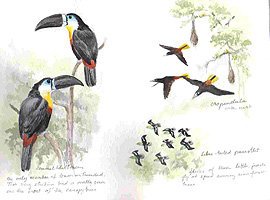
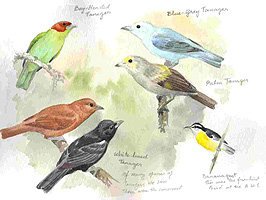
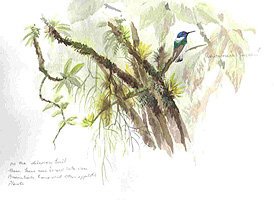
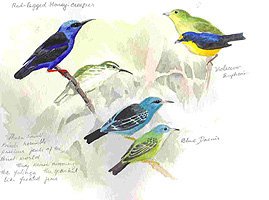
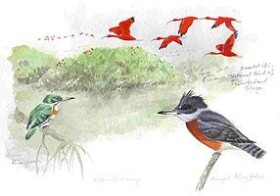
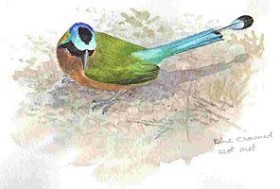
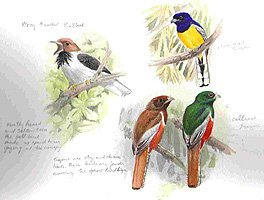
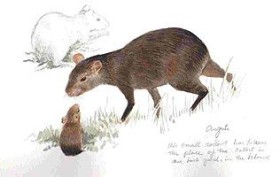
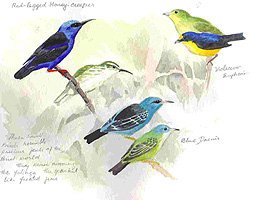

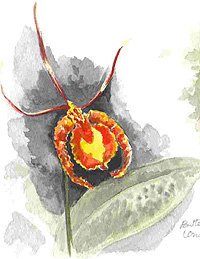
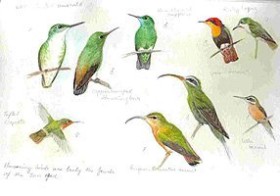
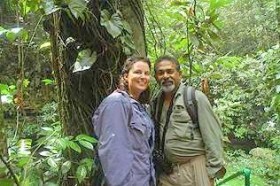
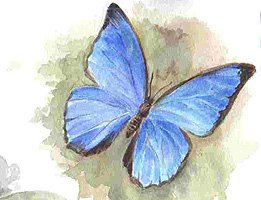
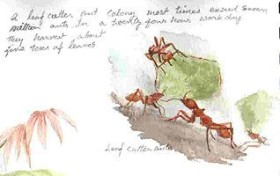
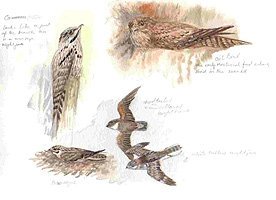
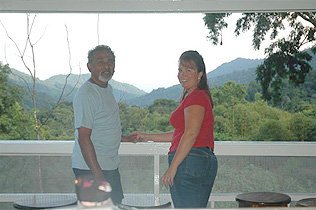

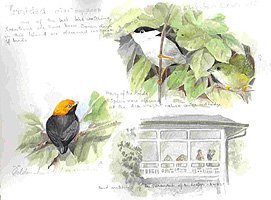
Comments